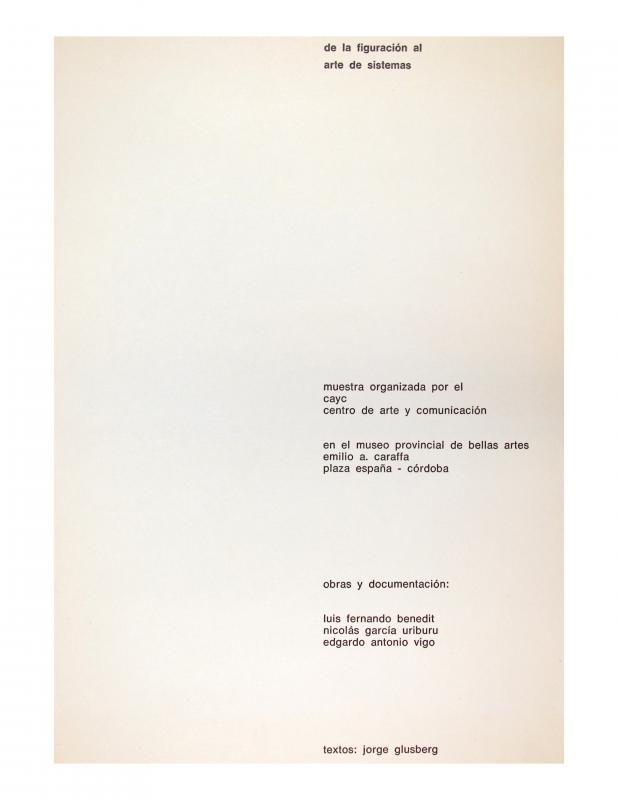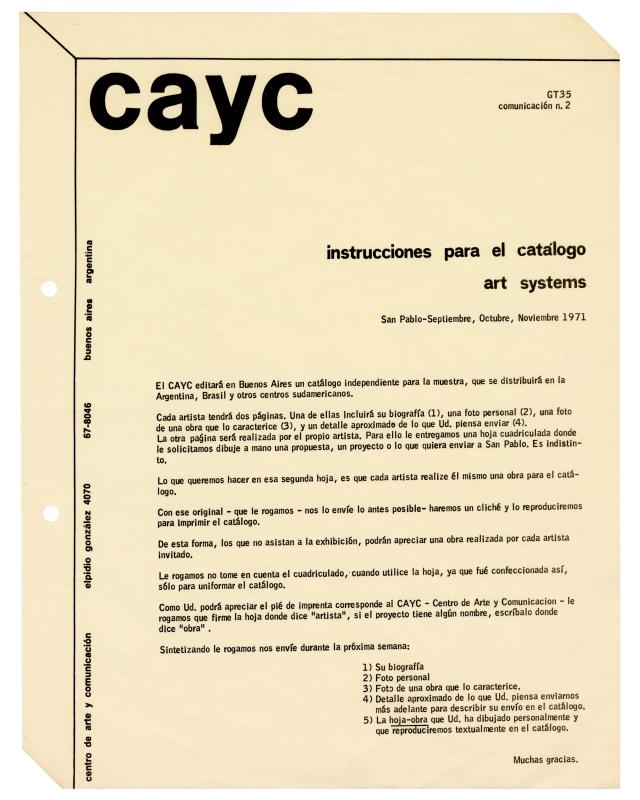Ever since it was founded, the CAYC (Centro de Arte y Comunicación), helmed by the cultural promoter, artist, and businessman Jorge Glusberg, was intended as an interdisciplinary space where an experimental art movement could flourish. The establishment of collaborative networks connecting local and international artists and critics played an important role in this process. The exhibitions shone a light on these exchanges, in which overviews of trends or individual artists provided an introduction to the innovations of international contemporary art and made Argentine and Latin American artists better known on the global scene.
In 1974 the CAYC began focusing a great deal of its attention on this project, promoting a variety of initiatives in exhibitions that traveled around a contemporary circuit of new cultural spaces and centers that were emerging in Europe at the time. The exhibition Arte de Sistemas en Latinoamérica visited several European cities from 1974 to 1976, presenting an overview of the region’s recent works adapted to the concept of systems art.
Promoting the second edition of this exhibition in Brussels in May 1974, this newsletter includes a photo of the intervention that took place during the opening of the event when Nicolás García Uriburu (1937–2016) colored the waters in the fountain in front of the Théâtre Royal de la Monnaie. García Uriburu became famous in June 1968, at the 34th Venice Biennale when, with a gondolier and a photographer in tow, he poured thirty kilos of fluorescein, a harmless substance, into the Grand Canal and turned the waters green. This expression of Land art sought to redefine the connection between art and nature, directly related to an incipient environmental awareness at a world level. The newsletter explains that García Uriburu performed his intervention in other places in Europe and America.
García Uriburu joined the CAYC in 1970, when he took part in the exhibition De la figuración al arte de sistemas (Museo Caraffa, Córdoba) (doc. no. 761141), which was the first time the term “arte de sistemas” was used alongside works by Luis Fernando Benedit and Edgardo Antonio Vigo. [See GT-34 (doc. no. 1476284) and GT-35 (doc. no. 1476285)].



